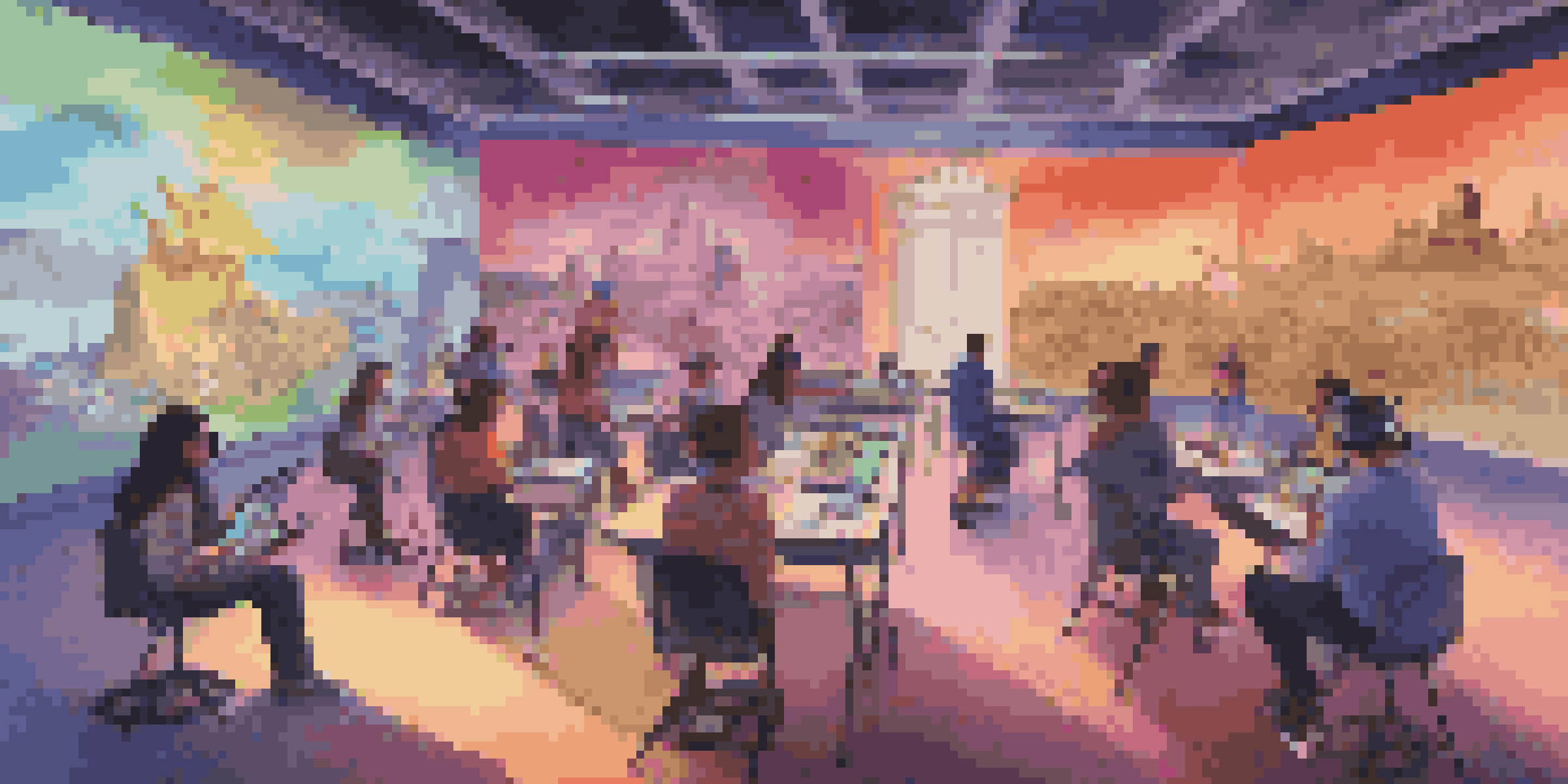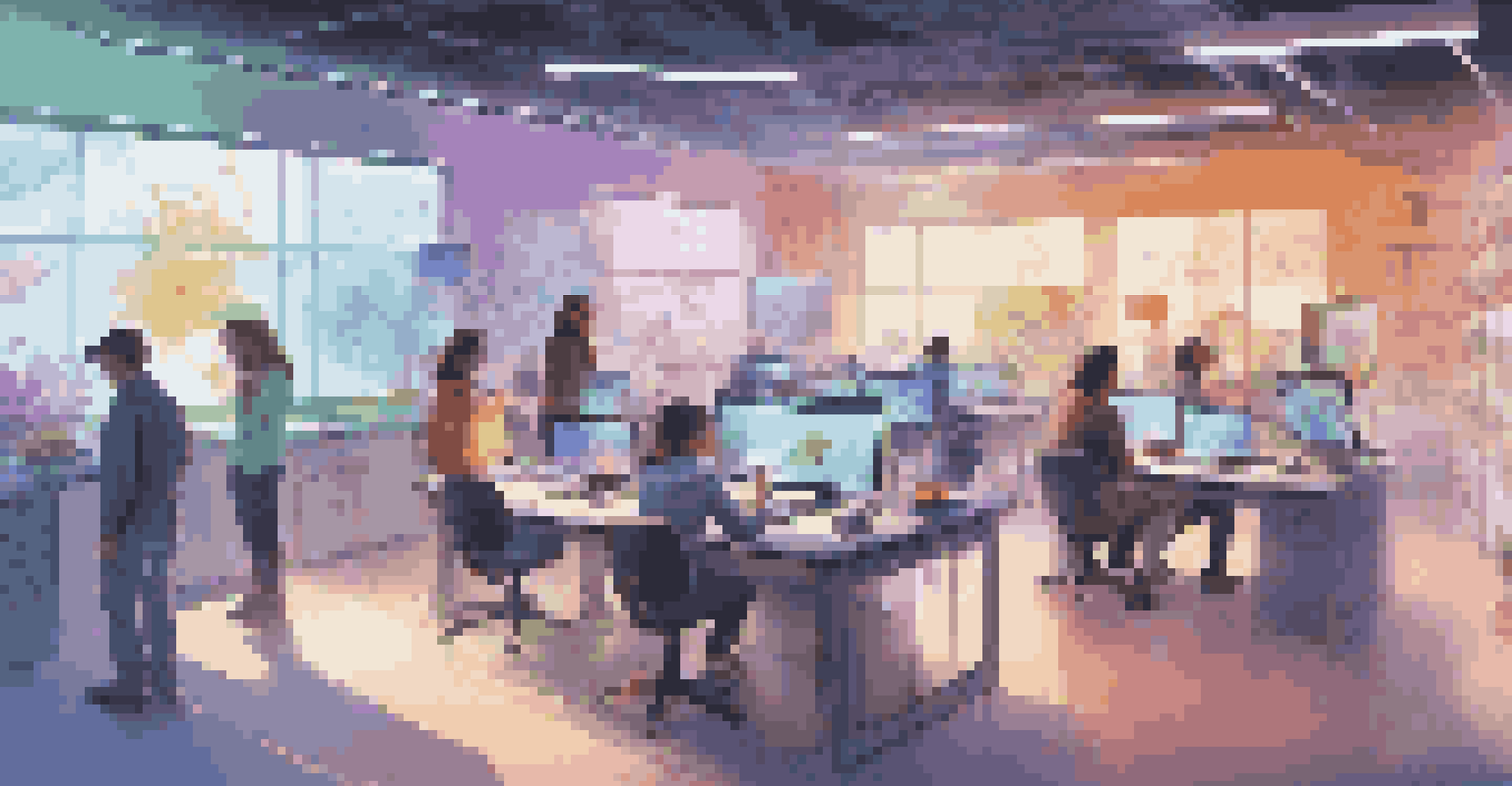Enhancing Learning Through Collaborative VR Experiences in Class

The Rise of Virtual Reality in Education
Virtual reality (VR) has taken the educational world by storm. With immersive experiences, students are transported to new worlds, enhancing their engagement and understanding. This technology allows learners to interact with simulations that would otherwise be impossible in a traditional classroom setting.
The future of education is not just about technology; it's about using technology to create better learning experiences.
Imagine studying ancient civilizations by actually walking through their streets or exploring the human body in 3D. Such vivid experiences make lessons memorable and more impactful. As educators seek to innovate, VR stands out as a powerful tool for enhancing learning.
Moreover, VR is not just about visualization; it also fosters creativity. Students can collaborate on projects in a shared virtual space, bringing their ideas to life in ways that traditional methods simply can't match.
Collaboration: The Heart of Effective Learning
Collaboration is essential in education, and VR enhances this aspect remarkably. Students can work together in a virtual environment, sharing ideas and solutions in real-time, irrespective of their physical locations. This not only encourages teamwork but also cultivates communication skills.

For example, a group of students from different schools can join a VR classroom to solve a problem, bringing diverse perspectives to the table. Such interactions mimic real-world scenarios, preparing them for future collaboration in their careers.
VR Transforms Educational Engagement
Virtual reality immerses students in learning experiences that enhance understanding and retention.
Furthermore, this collaborative approach builds a sense of community among learners. It breaks down the barriers of isolation often felt in traditional learning environments, fostering friendships and a support system.
Enhancing Engagement Through Immersive Experiences
One of the most significant advantages of VR in education is heightened engagement. When students are immersed in a virtual world, they are more likely to participate actively in their learning. This is especially beneficial for visual and kinesthetic learners who thrive on hands-on experiences.
We are all storytellers, and in education, we create the stories of our lives through the interactions we make.
Consider a science class where students can conduct virtual experiments without the constraints of physical resources. They can touch, manipulate, and experiment in ways that deepen their understanding of complex concepts.
This immersive approach not only captivates students' attention but also sparks their curiosity. When learners are engaged, they are more likely to retain information and develop a lifelong love for learning.
Bridging the Gap for Remote Learning
In a world increasingly leaning towards remote learning, VR serves as a bridge that connects students and educators. It creates a sense of presence, making remote interactions feel more personal and engaging. This is crucial in maintaining motivation and a sense of belonging among learners.
For instance, a student who is taking classes from home can join their peers in a VR environment, allowing for a shared learning experience. This not only alleviates feelings of isolation but also ensures that all students have access to the same quality of education.
Collaboration Redefined with VR
VR fosters real-time collaboration among students, breaking down geographical barriers and building communication skills.
Moreover, VR can provide equal opportunities for students with disabilities, offering tailored experiences that cater to their unique needs. This inclusivity is vital in creating a diverse and supportive educational landscape.
Real-World Applications of Collaborative VR
Collaborative VR isn't just a concept; it's already being applied in various educational settings. From virtual field trips to collaborative coding projects, teachers are finding innovative ways to integrate this technology into their curriculum. These real-world applications demonstrate the potential of VR to enhance learning.
For example, a history teacher might guide students on a virtual tour of historical landmarks, encouraging them to work together to complete challenges related to what they see. Such experiences make learning fun and interactive, ensuring that lessons stick.
Additionally, industries such as healthcare are utilizing VR for training purposes, allowing students to practice real-life scenarios in a risk-free environment. This hands-on approach prepares them for their future careers while reinforcing the value of collaboration.
Challenges and Solutions in Implementing VR
While the benefits of collaborative VR are clear, there are challenges in its implementation. Issues such as cost, access to technology, and the need for teacher training can hinder adoption. However, these challenges can be addressed with thoughtful planning and resource allocation.
Schools can consider partnerships with tech companies to secure funding and resources for VR programs. Additionally, investing in teacher training ensures educators are well-equipped to integrate VR into their lessons effectively.
Future of Learning is Collaborative
The ongoing evolution of VR technology promises a more inclusive and engaging educational landscape for future generations.
Moreover, as VR technology continues to evolve, we can expect more affordable and accessible solutions. With patience and persistence, the educational landscape can transform, making collaborative VR a staple in classrooms.
The Future of Collaborative Learning with VR
Looking ahead, the future of education with collaborative VR is promising. As technology advances, we can anticipate more sophisticated and user-friendly VR tools that will further enhance the learning experience. This evolution will likely lead to broader adoption across diverse educational settings.
Imagine classrooms where students from around the globe can collaborate on projects, conduct research, and solve problems together in real-time. Such possibilities create a richer, more diverse learning environment that prepares students for a globalized world.

Ultimately, the integration of collaborative VR experiences in education not only enhances learning but also fosters a sense of community, creativity, and innovation among students. As we embrace this technology, we pave the way for a brighter future in education.